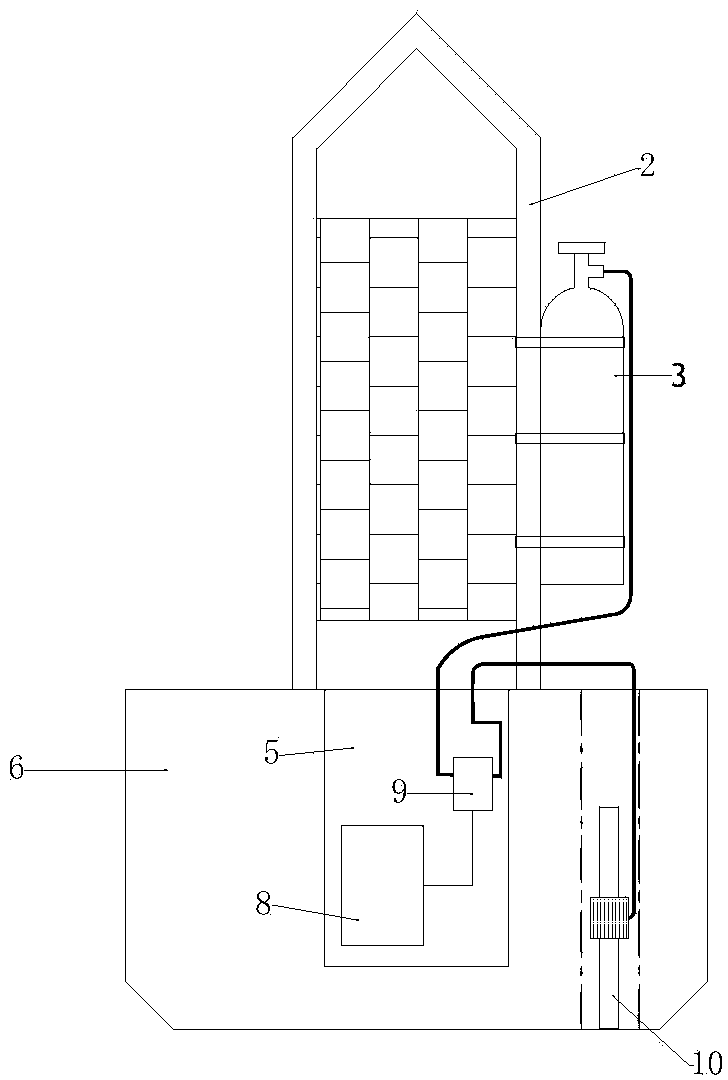Method for detecting chemical oxygen demand by using solar power water-borne monitoring buoy
A chemical oxygen demand and solar power supply technology, applied in the direction of measuring devices, current collectors, photovoltaic power generation, etc., can solve the problems of inability to integrate chemical oxygen demand, distortion of chemical oxygen demand measurement parameters, and inability to effectively clean the optical detection system
- Summary
- Abstract
- Description
- Claims
- Application Information
AI Technical Summary
Problems solved by technology
Method used
Image
Examples
Embodiment 1
[0020] On a river in Suzhou, such as figure 1 The shown solar powered water monitoring buoy of the present invention detects the COD of river water. The diameter of the floating body of the monitoring buoy is 1.2m, the weight is 150kg, and the height is 2m. There is 1 timer, 1 power switch, and a solar panel with a power of 40w. 3 pieces, 2 pieces of batteries with 66AH capacity, 8L high-pressure gas cylinders are filled with compressed air, and the chemical oxygen demand optical detector detects once every 30 minutes. Before the detection, the gas cylinder is controlled by the air valve to flush the detector and control the air valve Turn it on for 2.5 seconds to flush, and detect the data every half an hour in the river. While the instrument is detecting, manually use the sample cup to collect water samples from the side of the floating body for use in the comparative example, and monitor the results of 15 consecutive data within 450 minutes collected by the buoy. As shown i...
PUM
| Property | Measurement | Unit |
|---|---|---|
| diameter | aaaaa | aaaaa |
Abstract
Description
Claims
Application Information
 Login to View More
Login to View More - R&D
- Intellectual Property
- Life Sciences
- Materials
- Tech Scout
- Unparalleled Data Quality
- Higher Quality Content
- 60% Fewer Hallucinations
Browse by: Latest US Patents, China's latest patents, Technical Efficacy Thesaurus, Application Domain, Technology Topic, Popular Technical Reports.
© 2025 PatSnap. All rights reserved.Legal|Privacy policy|Modern Slavery Act Transparency Statement|Sitemap|About US| Contact US: help@patsnap.com



